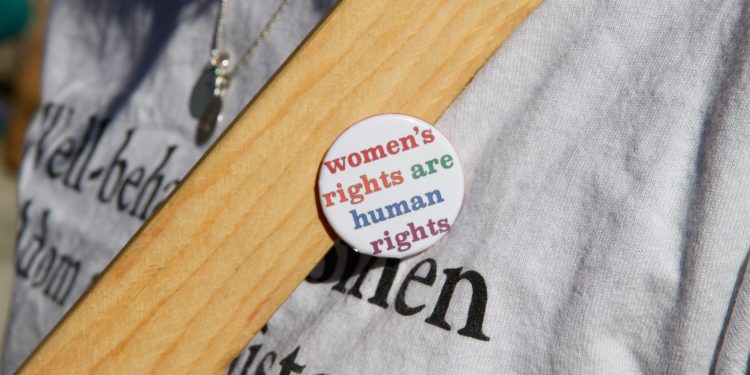India’s Rape Culture

India’s Crisis
India is one of the most populated countries in the world, with around 1.3 billion people living in it. This population is male-dominated, with 112 boys born for every 100 girls. This is because of illicit sex-selection abortions, and a culture that prefers having sons over daughters. Instead of progressing, India seems to be backtracking. For instance, almost 100 sexual assaults are reported every day, and there were around 40,000 gender-based attacks against women in the year 2016. This is an increase of 12 percent from the previous year, not accounting for the women who were either silenced or shamed into keeping their abuse a secret. The inequality of India’s heavily patriarchal society is the reason for its rape culture- women in India are much more susceptible to being raped or sexually harassed. The government needs to take several strides in order to fix the differences between the treatment of men and that of women, in order to protect the wellbeing of all of their citizens.
Past Incidents
In the month of January alone, an eight-year-old Muslim girl was kidnapped before being raped several times, with her body left in a forest. A 15-year-old boy raped a three-year-old girl, and two men raped a 20-year-old bride-to-be. In April, in the state of Jammu and Kashmir, an eight-year-old was drugged before being gang-raped and then strangled. These are only a few of the revolting incidents that have occurred, and there have been many more since. In addition, one of the most notorious assaults was the rape of a physiotherapy student in 2012, who was violated on the bus ride home by several men and an iron rod. She later died from her severe wounds. Her death garnered attention and outrage on several news and media sites, and it is upsetting that it took an occurrence this tragic to raise awareness.
Systemic Violence
The Indian government has created and passed several laws protecting the rights of women. The consequences of rape and other forms of violence against women are becoming worse, and there are more and more assaults being reported every day. So why is the number of attacks increasing instead of lessening? Many argue that this is due to politicians taking the easy way out. On the surface, it seems as if they are creating major changes that will benefit the lives of all women in India. But there is much more that has to be done, such as change that laws and lawmakers themselves cannot completely induce. India’s culture as a whole has to be fixed- it teaches men from the moment they are born that they are superior to women. Indian society, for the most part, pressures women into positions that involve only meager domestic work. They are forced to live the rest of their lives as housewives, as maids, as mothers, and have to cater to the men around them. Although this is not always the case, strict gender roles and norms are extremely prevalent within India, meaning that this is the situation for many Indian women.
Why the Misogyny?
The reason for rape and other forms of assault against women is due to misogyny, or the belief that they are inferior to men. This causes men to think that they are allowed to use their physical strength to coerce women into doing what they want, which, the majority of the time, involves sex. Many aspects of the culture breed sexism and hatred from the moment a child is born. Sons are considered much more valuable than daughters are, and even religious scriptures shame women. The Mahabharata, a religious text, in Book 13 Section 40, claims that “There is no creature more sinful, than woman.” There are many more examples of the condemnation of women for simply being themselves- and in a predominantly religious society, this is crucial to the upbringing of the men in the community. From a young age, they are taught to place themselves on a higher level, and their perceived dominance or superiority to women becomes apparent when they rape or assault them. Furthermore, Indian mythology is revered in India’s culture, evidence of a thriving society that was light years ahead of others around it. But in numerous pieces of ancient literature and texts, rape is shown to be normal, if not glorified. Vishnu, an important Indian god, is praised for raping the wife of a soldier because this is what stops him from being too powerful later on in the text. Additionally, the God raped his pregnant sister in law, yet is still worshipped by many in India. This normalizes rape within Indian society- it shows them that rape is not an inherently bad thing, since it has been done by so many esteemed figures.
Change Is Slow
As mentioned before, India’s government has issued several new laws protecting rape victims, such as longer prison terms for rapists and the death penalty for the rape of girls under twelve. But many of India’s politicians themselves sexually abuse women, and some are even in blatant support of accused rapists. For instance, the leader of the regional Samajwadi Party, a political party in India, promised to change the anti-rape laws in place, claiming that “boys make mistakes.”
In order to cause actual change, there must be more done to raise awareness about the issues and sexism that runs rampant in India. This can be done through more media attention, through articles, and through social media, in turn condemning politicians in support of rapists and shaming them and other misogynists as well. Furthermore, India’s government and the politicians within it can work together to promote a better understanding of sexual health within schools- consent should be taught at an early age, and students should know by heart that it is not ok to be coerced into anything. In doing so, they will create a more educated populace, and build a future generation that firmly disapproves of rapists and sexual predators instead of accepting them.
Image Attribute: Pixabay




